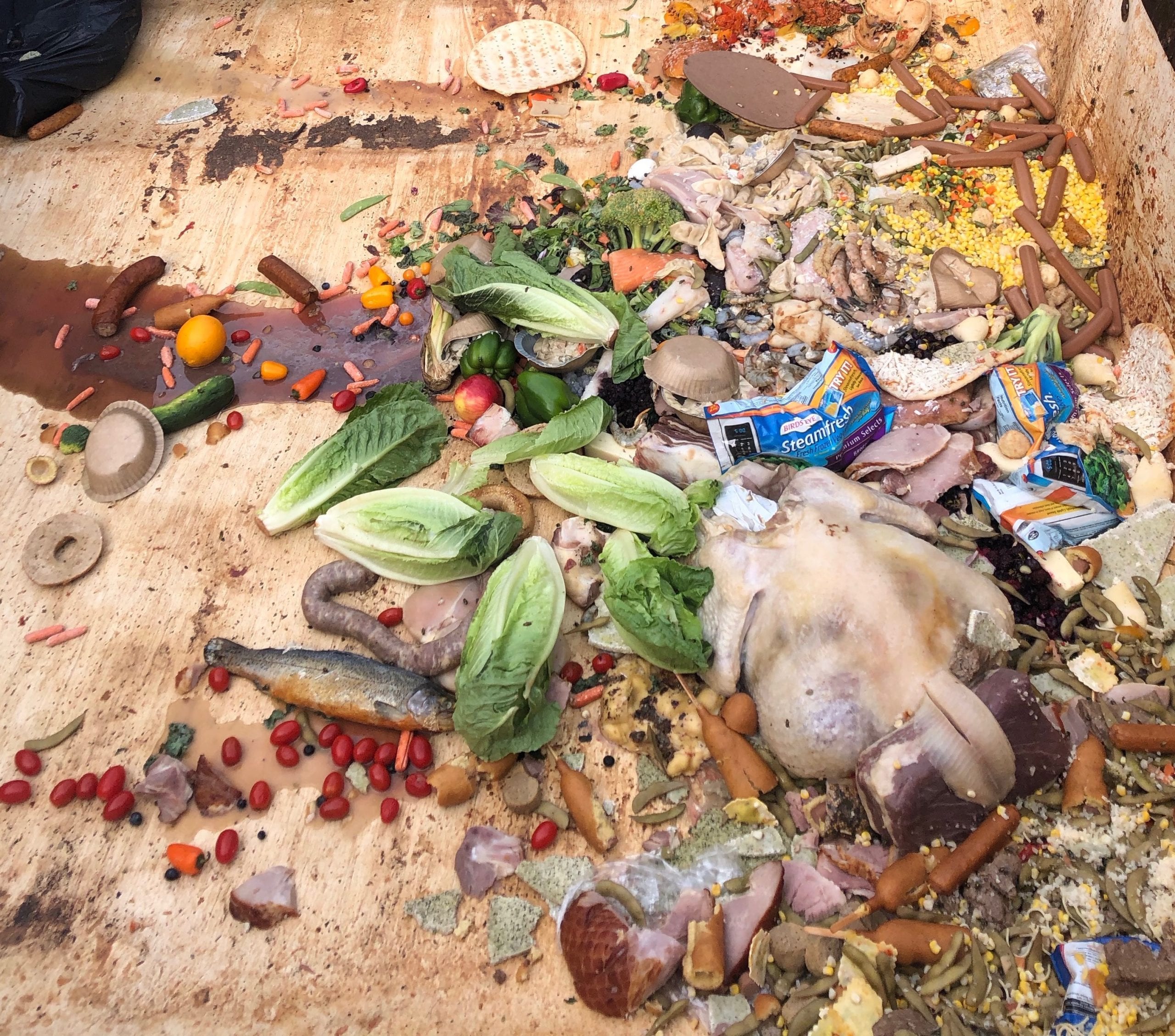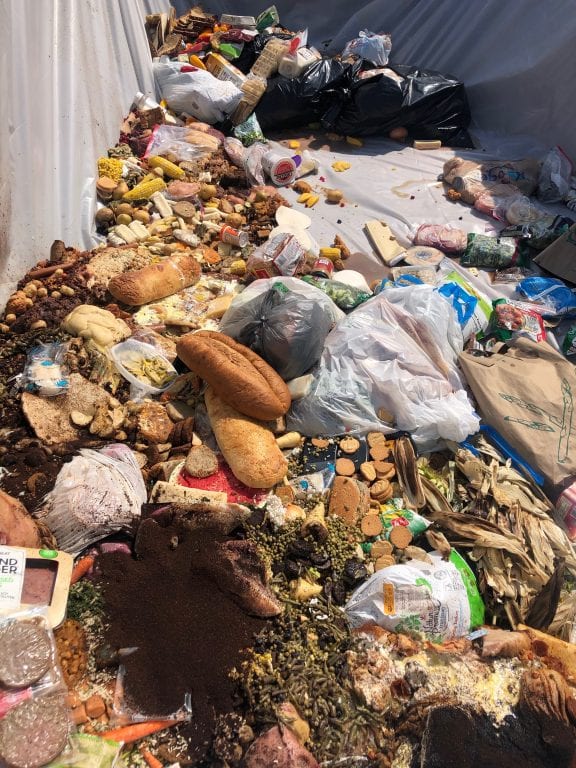West Hartford Residents: Your Fridge is Restocked, Let’s Not Waste Food

Audio By Carbonatix

Following Tropical Storm Isaias, West Hartford residents were able to dispose of their food waste in a special dumpster that was then delivered to Quantum Biopower for recycling. Photo credit: Katherine Breer Bruns
The Town of West Hartford’s recycling coordinator provides some staggering statistics, and some tips for reducing food waste.

Following Tropical Storm Isaias, West Hartford residents were able to dispose of their food waste in a special dumpster that was then delivered to Quantum Biopower for recycling. Photo credit: Katherine Breer Bruns
By Katherine Breer Bruns
Forty percent of all food in America is wasted.
Here is a sobering visual to consider: “If the United States went grocery shopping, we would leave the store with five bags and drop two in the parking lot. And leave them there. Seems crazy, but we do it every day.” (NRDC)
Wasted food is on many minds here in West Hartford in the aftermath of the extended power outages caused by Tropical Storm Isaias. It blasted through West Hartford, causing great damage and leaving many residents without power for days, forcing people to throw away large amounts of food.
Some were able to get the food waste to West Hartford’s temporary food waste drop off site where it was sent to Quantum Biopower and turned into energy and compost. However, food that didn’t end up in the special dumpster went to where too much food in the U.S. goes every year: the trash.
There was no choice in the aftermath of this storm but to dispose of the food. In normal circumstances, however, we have the choice not to waste food – and money – every day.
Food waste facts
- Food waste made up about one-quarter of disposed waste in Connecticut in 2015 (Connecticut Department of Energy and Environmental Protection)
- $1,600 is the amount an average American family of four spends a year on food they throw away (National Resources Defense Council – NRDC)
- 400 pounds of food per person per year is thrown away in the U.S. (NRDC)
- $161 billion is spent on this wasted food in the U.S. (NRDC)
- $29 billion a year is wasted by American consumers due to the confusion created by unregulated “sell-by” labels (Consumer Goods Forum)
- This wasted food releases 3.3 billion tons of green-house-gases into the atmosphere (United Nations)
To make it worse, this loss doesn’t take into account the wasted energy and resources used to produce and transport all that wasted food.
We have the power to dramatically lower these astonishing numbers. In 2015, the United States Department of Agriculture (USDA) and the United States Environmental Protection Agency (EPA) set a national goal of cutting food waste by 50% by 2030.
On a list of the top 10 solutions on the Project Drawdown list of ways to impact climate change, reducing food waste is No. 3.
It may be difficult for us as individuals to control what food is wasted on the field, in transport and in supermarkets but we can make a difference!
Tips for reducing food waste
- Plan and make a shopping list … and stick to it. See: Tips for Meal Planning
- Shop your pantry before shopping your grocery store
- Eat leftovers
- Freeze food you cannot finish
- Share at restaurants and take home leftovers
- Re-learn confusing date labels: “Sell by,” “Best by,” “Use by” by clicking here: Deciphering Dates
- Find local nonprofits that welcome food donations. See Tackling food waste
- Compost what you can’t eat.
Search Save the Food for more tips on reducing food waste. Reducing food waste is good for your wallet, our town, and the earth.
One final visual: “If food waste were a country it would be the world’s third largest emitter of green house gas after China and the United States” (USDA).
Stay tuned for more articles and tips to save money, reduce what’s trashed and help West Hartford support the Connecticut DEEP in meeting its goal to divert 60% of waste material from going to trash by 2024.
Like what you see here? Click here to subscribe to We-Ha’s newsletter so you’ll always be in the know about what’s happening in West Hartford! Click the blue button below to become a supporter of We-Ha.com and our efforts to continue producing quality journalism.



